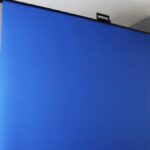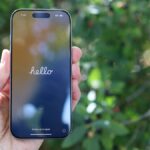Dell Inspiron 14 2-in-1 (7445)
MSRP $950.00
“The Dell Inspiron 14 2-in-1 (7445) is reasonably fast, but average battery life and a poor display stand in its way.”
Pros
- Solid build quality
- Attractive aesthetic
- Good productivity performance
- Good keyboard and touchpad
Cons
- Battery life isn’t great
- Display is disappointing
With so many new chipsets introduced lately from Intel, AMD, and Qualcomm, you might be tempted to think those are the only laptops around. But they’re not. Manufacturers are still releasing machines with older generations, in particular where pricing is a concern. That’s where Dell’s Inspiron 14 2-in-1 (7445) comes in, but unfortunately, it can’t reach the heights of the best laptops.

Get your weekly teardown of the tech behind PC gaming
It’s a reasonably priced 14-inch laptop that undercuts the current crop of new machines. It’s not a budget laptop, but it’s still less expensive. In fact, I’d be tempted to say that for someone with a limited budget, it’s not a bad option — just don’t expect any miracles. Even with that caveat, the disappointing battery life and abysmal display hold the laptop back despite its value-focused price.
Specs and configurations
| Dell Inspiron 14 2-in-1 (7445) | |
| Dimensions | 12.36 inches x 8.90 inches x 0.62 inches |
| Weight | 3.77 pounds |
| Processor | AMD Ryzen 5 8640HS AMD Ryzen 7 8840HS |
| Graphics | Radeon Graphics |
| RAM | 8GB 16GB |
| Display | 14.0-inch 16:10 FHD+ (1920 x 1200) IPS, 60Hz |
| Storage | 512GB SSD 1TB SSD |
| Touch | Yes |
| Ports | 2 x USB-C 3.2 Gen 2 2 x USB-A 3.2 Gen 2 1 x HDMI 1.4 1 x SD card reader 1 x 3.5mm audio jack |
| Wireless | Wi-Fi 6E and Bluetooth 5.2 |
| Webcam | 1080p |
| Windows 1 | |
| Battery | 65 watt-hour |
| Price |
$750+ |
The Inspiron 14 2-in-1 (7445) comes in two configurations, both built around AMD’s mainstream Ryzen chipsets. The base model is a $730 configuration with an AMD Ryzen 5 8640HS, 8GB of RAM, a 512GB SSD, and a 14-inch FHD+ IPS display (the only option). The high-end model is $950 with a Ryzen 7 8840HS, 16GB of RAM, and a 1TB SSD.
That’s less than the Inspiron 14 2-in-1 (7441) that’s built around Qualcomm’s Snapdragon X chipset and starts at $1,000, but adds in a higher-res IPS display. And it competes more directly with laptops like the HP Envy x360 14 that uses Intel’s previous generation Meteor Lake chipsets at prices starting at $700 and ramping up to $1,480 with more RAM and storage, as well as an OLED display. That makes the Inspiron 14 2-in-1 (7445) a reasonably priced laptop, but not necessarily something special.
Design

The Inspiron 14 2-in-1 (7445) is similar to Dells’ other midrange 360-degree convertible 2-in-1s. It’s built very well, not only for this price but for any price, without any bending, flexing, or twisting in the chassis, keyboard deck, or lid. That’s thanks to an all-metal construction that results in a relatively weighty 3.77 pounds. Some similar 14-inch laptops are lighter, like Dell’s own Qualcomm version of the Inspiron Plus that’s 3.17 pounds. The HP Spectre x360 14 is also lighter at 3.19 pounds. The Inspiron 14 2-in-1 (7445) is reasonably thin, though, and outside of the usual large bottom display bezels to accommodate the 360-degree hinge, its bezels are small enough to keep the laptop reasonably sized in width and depth.
Aesthetically, Dell played it safe. It’s a minimalist design with zero chrome, in line with most laptops today, and its nicest design feature are the rounded edges that make the laptop comfortable to hold. That’s especially true in tablet mode, although the machine’s weight makes that a less comfortable proposition. A Windows tablet like the Microsoft Surface Pro 11 is a lot more comfortable to hold in one hand.

Overall, the Inspiron is a nice-looking and well-built laptop that doesn’t really stand out — and that’s OK. Yes, the Spectre x360 14 and Apple MacBook Air M3 are more-elegant machines, but they’re also more expensive. There’s nothing wrong with a moderately priced machine that doesn’t make any waves.
Keyboard and touchpad

The keyboard is a standard island affair with moderately sized keycaps, plenty of spacing, and light, snappy switches. I have no complaints, and while Apple’s Magic Keyboard remains my favorite, I was fine typing on this keyboard in writing this review.
The touchpad is a very standard mechanical version. It’s large enough, although there’s plenty of available space on the palm rest. And it works well enough, although the button presses were a little loud and harsh. A haptic touchpad is better, but it’s hard to expect that at this price. The display is touch- and pen-enabled, but the pen is an extra-cost item that wasn’t included with my review unit.
Connectivity and webcam
There’s plenty of connectivity here, but one significant limitation. Because it’s an AMD chipset, there’s no Thunderbolt 4. And there’s no USB4 either, meaning you’re limited to slower USB-C ports. Even the HDMI port is behind with only the 1.4 standard. That’s not the end of the world, but it’s worth noting if you want to hook up the laptop to an external monitor. Wireless connectivity is a step behind as well, but the faster Wi-Fi 7 won’t be in widespread use for a while.
The webcam is 1080p, which is the newest standard. It’s fine. Rather than an infrared camera for Windows 11 Hello facial recognition, there’s a fingerprint reader built into the power button. That’s a reasonable alternative, and it works well enough, but facial recognition is faster and easier to use.
Performance

The Inspiron 14 2-in-1 (7445) uses a 28-watt AMD Ryzen 8000 series chipset, either the 6-core/12-thread Ryzen 5 8640HS or the 8-core/16-thread Ryzen 7 8840HS. Those are AMD’s current mainstream chipsets as opposed to the cutting-edge Ryzen AI 300 series. Competitors include Qualcomm’s Snapdragon X chipsets running on Windows on Arm laptops and Intel’s latest Lunar Lake chipsets that are aimed specifically at efficiency.
I reviewed the Inspiron with the Ryzen 7 8840HS, and while it may not be the fastest chipset around, it’s not the slowest, either. It holds up pretty well against Intel’s Lunar Lake and Qualcomm’s Snapdragon X Plus. That latter chipset has faster performance in some other laptops, but Dell’s implementation was considerably slower than its implementation of the Ryzen 7 8840HS. Outside of the Nvidia GeForce RTX 4050 in the Asus ProArt PX13, none of these laptops have great graphics performance.
| Geekbench 6 (single/multi) |
Handbrake (seconds) |
Cinebench R24 (single/multi) |
PCMark 10 Complete |
|
| Dell Inspiron 14 2-in- (7445) (Ryzen 7 8840HS / Radeon Graphics) |
Bal: 2,440 / 11,219 Perf: 2,508 / 11,243 |
Bal: 76 Perf: 73 |
Bal: 99 / 643 Perf: 100 / 726 |
6,906 |
| Dell Inspiron 14 Plus (7441) (Snapdragon Plus X1P-64-100 / Adreno) |
Bal: 2,445 / 8,740 Perf: 2,451 / 8,744 |
N/A | Bal: 108 / 408 Perf: 108 / 419 |
N/A |
| Asus Zenbook S 14 (Intel Core Ultra 7 258V / Intel Arc) |
Bal: 2,738 / 10,745 Perf: N/A |
Bal: 113 Perf: N/A |
Bal: 112 / 452 Perf: 120 / 560 |
N/A |
| Asus ProArt PX13 (Ryzen AI 9 HX 370 / RTX 4050) |
Bal: 2,710 / 14,696 Perf: 2,690 / 14,243 |
Bal: 54 Perf: 52 |
Bal: 116 / 897 Perf: 116 / 974 |
7,540 |
| HP Envy x360 14 2024 (Core Ultra 7 155U / Intel Arc) |
Bal: 2,130 / 8,175 Perf: 2,229 / 8,298 |
Bal: 139 Perf: 120 |
Bal: 100 / 390 Perf: 102 / 485 |
5,750 |
| HP Spectre x360 14 (Core Ultra 7 155H / Intel Arc) |
Bal: 2,234 / 11,878 Perf: 2,246 / 11,821 |
Bal: 138 Perf: 83 |
Bal: 93 / 512 Perf: 99 / 556 |
6,316 |
| Apple MacBook Air (M3) |
Bal: 3,102 / 12,078 Perf: N/A |
Bal: 109 Perf: N/A |
N/A | N/A |
For demanding productivity users, the Inspiron 14 2-in-1 (7445) is plenty fast. It’s not for gamers or creators, though.
Battery life

The Inspiron 14 2-in-1 (7445) has a large 75 watt-hour battery and a low-power IPS display. AMD chipsets were once more efficient than Intel, but Lunar Lake changed that dynamic and Qualcomm’s chipsets are much more efficient. And then Apple’s M3 chipsets remain the efficiency leaders.
| Web browsing | Video | |
| Dell Inspiron 14 2-in- (7445) (Ryzen 7 8840HS) |
8 hours, 30 minutes | 8 hours, 45 minutes |
| Dell Inspiron 14 Plus (7441) (Snapdragon Plus X1P-64-100) |
10 hours, 19 minutes | 19 hours, 28 minutes |
| Asus Zenbook S 14 (Core Ultra 7 258V) |
16 hours, 47 minutes | 18 hours, 35 minutes |
| HP Envy x360 14 2024 (Core Ultra 7 155U) |
7 hours, 37 minutes | 9 hours, 30 minutes |
| Dell Inspiron 14 Plus 2024 (Core Ultra 7 155H) |
10 hours, 24 minutes | 14 hours, 30 minutes |
| Apple MacBook Air (Apple M3) |
19 hours, 38 minutes | 19 hours, 39 minutes |
As it stands, the Inspiron didn’t get very good battery life by modern standards. It’s unlikely to last a whole day running a typical productivity workflow, unlike several others that are almost guaranteed to do so. Historically, these aren’t bad result for Windows laptops. But times have changed.
Display and audio

Here we get to the Inspiron 14 2-in-1 (7445)’s biggest weakness. Its 14.0-inch FHD+ (1920 x 1200) IPS display isn’t a bad thing on paper. I like sharper displays, and FHD+ in a 14-inch panel isn’t nearly sharp enough for me — but many people probably won’t mind it. And there should be a power benefit, but based on my battery tests, that display isn’t helping this laptop much.
As I suspected when I first turned on the laptop, the display’s quality just isn’t up to snuff. First, it’s not bright enough at 271 nits. Almost every display I’ve reviewed in the last several years came in at well over 300 nits, to the point where our 300-nit standard is woefully out of date. The contrast was good at 1,340:1, but that’s in line with modern IPS displays.
The real problem came in its colors. At 62% of sRGB, 46% of AdobeRGB, and 46% of DCI-P3 and with a color accuracy of DeltaE (color difference) of 2.61, it’s just not good enough. For comparison, rival laptops in this price range typically offer much betters colors averaging 100%, 75%, and 75%, respectively. And, I rarely come across a machine with a DeltaE that’s more than 2.0.
That’s disappointing. Even less expensive laptops have better displays today. The last laptop with such a poor display was the Lenovo Yoga 7 14 2-in-1, and I didn’t like it there very much, either. And when spectacular OLED displays have become available for around the same price, it’s hard not to be disappointed.
The audio is OK, with dual downward-firing speakers. They’re good enough for YouTube and system sounds, but for anything else, you’ll want a pair of headphones.
Battery life and a disappointing display hold back a decent laptop
There’s a lot to like about the Inspiron 14 2-in-1 (7445). It’s very well-built and reasonably attractive, and it’s fast enough for demanding productivity users. Its price is also attractive, which would normally compel me to give it a strong recommendation.
Unfortunately, its battery life just doesn’t cut it today, when competing Windows laptops last twice as long. And its display is unforgivable with its poor colors and brightness. You can do a lot better and not spend a lot more money.
Read the full article here
















